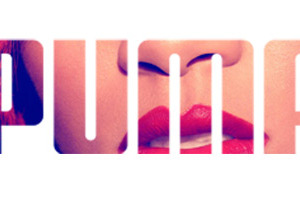
Developing effective taglines is a disciplined process that melds insight with positioning strategy and creativity. So what is a tagline, and how can tagline development deliver a breakthrough? Sometimes called tags, positioning taglines, slogans, jingles, unique selling propositions or descriptors, taglines distill your corporate or brand position to a few simple and memorable words—ideally from one to five words, and never more than seven words.
What is a Tagline?
Taglines are flexible, persuasive, differentiating, extendable and very often, more memorable than the corporate and brand names they modify. Why? Many names are legacy names, likely descriptive and sometimes over time, less relevant to positioning due to changing markets. With years of equity, it can be difficult to change names, but taglines can change with new campaigns, or to target different audiences.
Types of Taglines
Like names, there are different types of taglines. With metaphorical names that have highly provocative meanings, sometimes simple, Descriptive taglines can add clarity and anchor aggressive branding. For our client AfterMath, we chose a simple descriptor, Claim Science to communicate industry focus and differentiation. In addition to descriptive taglines, IdeasBIG has identified other tagline types including Metaphorical, Aspirational, Comparative, and Jingles. And note that hybrid types abound.
Metaphorical Taglines
Like their name counterparts, metaphorical taglines deliver meanings (ideally double meanings) and associations that reinforce desired positioning, often when names by themselves cannot. Metaphorical taglines can be particularly effective when paired descriptive names to reinforce a position and improve memorability.
A great example of a metaphorical tagline is Chevy Trucks, “Like a Rock”, communicating durability, and leveraging memorability by virtue of the popular (Bob Seger) hit song. On the corporate front, GE’s “Imagination at Work” delivers the double meaning.
Aspirational Taglines
Consumer product brands and corporate America are enamored with Aspirational taglines. And why not? Consumers often buy products based on a desire for self-improvement, and corporations always want to be perceived as benevolent. One of the most famous taglines in history, “Nike, Just Do It”, is clearly aspirational with a meaning of achievement and athletic performance. In the corporate arena, examples abound, from HP’s “Invent”, to Apple’s “Think Different”.
Comparative Taglines
When a secondary competitor seeks to take on the category leader, a comparative tagline can quickly and effectively deliver differentiation. Consider Taco Bell’s “Think Outside the Bun”, or “Pork, the other white meat”, or the poster child for comparative taglines, Avis: “We Try harder”.
Jingles
Jingles are most often associated with catchy tunes for consumer products with big advertising budgets. IDeasBIG and Modern Marketing Partners also uses jingles to describe tagline types that use slogans that employ rhythm, rhyming or alliteration. Examples include
- Bounty, “the quicker picker-upper”
- “Don’t get mad, get Glad”
How Can You Find Effective Taglines?
The process of developing effective taglines is, not surprisingly, similar to name development. Product or industry category understanding is required, along with customer insight and competitive positioning. Tagline generation is followed by scoring using several criteria, screening and trademark search. Final selection from a shortlist of taglines can be supported by customer testing and old-fashioned judgment.
Find us on Twitter to get other B2B marketing and branding tips. Feel free to contact us via by leaving a comment or via contact form to see how IDeas BIG can help you improve your tagline. Also share this post with others who are working on taglines and give us your feedback on what’s worked for you!
1 Comment
Pingbacks
-
[…] Tips for Effective Taglines – IDeas BIG […]

